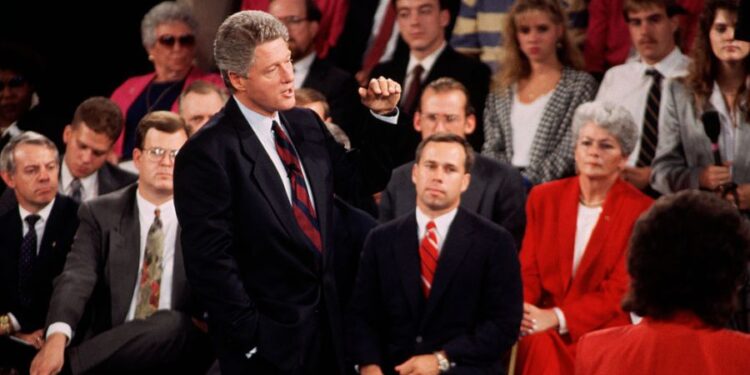
(NewsNation) — The 2024 election is just days away, and on Wednesday night, voters will have an opportunity to have their voices heard during a town hall with NewsNation’s Chris Cuomo.
The preelection town hall is on Wednesday, Oct. 30, at 8 p.m. ET and featured guests from across the political spectrum. Bill O’Reilly, Stephen A. Smith, Mark Cuban, former candidate Robert F. Kennedy Jr. and others to talk with voters about the main issues heading into the 2024 election.
Last week, Republican vice presidential nominee JD Vance took questions from Michigan voters during a separate NewsNation town hall. Republicans, Democrats and independents asked about a range of issues, including border security, housing costs and political polarization.
Unlike a campaign rally or a moderated debate, town halls allow everyday Americans to engage with candidates directly. The entire event is meant to feel less scripted and informal.
Here’s how town halls became a staple of American politics.
When did town halls begin?
The very first town hall in the United States was established in Dorchester, Massachusetts, in 1633, according to Smithsonian Magazine. Back then, it was a physical place where townspeople held meetings and gathered to make decisions.
The meeting format soon spread throughout New England and gave locals a way to have their say in local affairs and decide on important issues.
Over time, the community forum became distinct from the structure, evolving into a core feature of American democracy. Nowadays, town hall meetings often refer to any forum where community participation is allowed on a given topic. These meetings can be held in a variety of venues like churches, schools and libraries.
Town halls are not just a way for community members to convene with each other — they’re also a format for local and national politicians to talk with constituents or even debate with their opponents.
American lawmakers held 23,000 town hall meetings over eight years from Aug. 2013 to Dec. 2021, according to research by the Center for Effective Lawmaking. The study found that representatives and senators who engage with town halls can enhance their lawmaking effectiveness in Congress.
When did town halls become part of presidential politics?
Though the meeting format has been around for hundreds of years — when it comes to presidents — town halls are a relatively modern development.
In the past, presidential hopefuls didn’t participate in town halls; in fact, back in George Washington’s day, they didn’t even campaign for votes.
“On-the-sly politicking and newspaper editorials were expected to do the campaign work for them — no debates needed,” Smithsonian Magazine said.
Quite a bit later, in March 1977, then-President Jimmy Carter conducted a town hall, and in doing so, “innovated a new form of presidential communication,” media professor David Michael Ryfe wrote.
Before that, “no sitting president had ever engaged in a televised forum so spontaneous, informal and intimate,” Ryfe wrote.
Fifteen years later, in 1992, Bill Clinton took the format to the next level when he hosted televised town halls and answered questions from a studio audience while on the campaign trail.
That same year, 1992, saw the first “town hall-style” presidential debate between Clinton, George H.W. Bush and Ross Perot.
What’s the difference between a regular debate and town hall debate?
Since the inaugural town hall debate in 1992, the format has become a regular part of the presidential debate schedule.
“The principle difference between a regular debate and a town hall debate is that instead of questions from a panel of journalists, questions come from ‘real people,’ specifically undecided voters,” professor Jonathan Beecher Field wrote in “Town Hall Meetings and the Death of Deliberation.”
Town hall debates have produced some memorable moments over the years because personal character tends to take center stage rather than policy.
“Instead of simply asking about a candidate’s policies or legislation they want to enact, questions are more likely to touch on understanding why the candidates hold certain beliefs,” authors noted in a Columbia Journalism Review article.
Clinton scored points over Perot and Bush in 1992 when he adeptly answered a question about how the national debt had affected him personally. The former president walked toward the woman and spoke directly to her, coming off personable and concerned.
This year’s presidential candidates, Donald Trump and Kamala Harris, did not have a town-hall style debate, instead opting for a single moderated debate without an audience. However, both candidates have held separate televised town halls.






